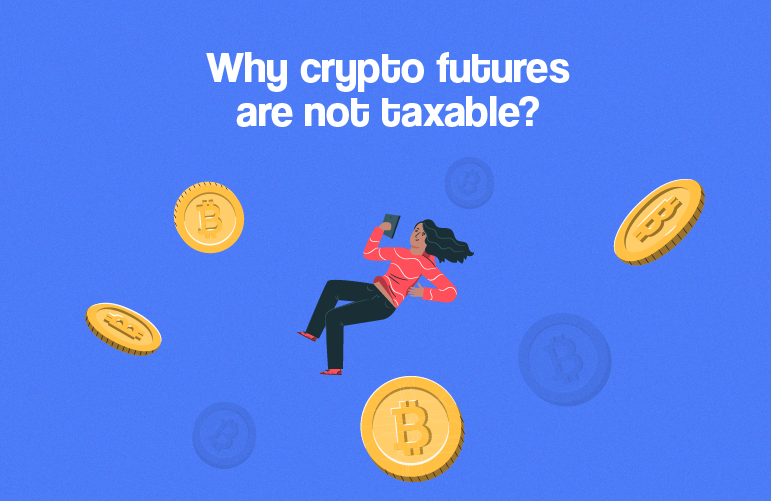Why are crypto futures not taxed as Virtual Digital Assets (Normal Tax as per your slab applies) under the Income Tax Act? This is one question that hits all of our heads after first checking out the Pi42 platform. Today we are going to answer that question for you.
So, let’s start by understanding crypto futures!
Perpetual crypto futures have gained popularity in the crypto asset space due to their flexibility and the absence of expiration, offering a seamless trading experience for those who want to engage in long-term or short-term trading strategies.
In layman terms, crypto asset futures are financial contracts that obligate the buyer to purchase, or the seller to sell, a specified quantity of a particular crypto asset at a predetermined price on a future date. In this case since they are perpetual contracts, there’s no expiration date, serving as a great tool to deploy long term trading strategies. Futures contracts allow traders to speculate on the future price movements of cryptocurrencies without actually owning the assets.
Unlike traditional futures contracts, perpetual futures contracts continue indefinitely until either party decides to close the position.
Now, let’s see why these futures contracts are not taxed as VDA but taxed as normal Income under Income Tax Act.
Taxes on Crypto Futures:
Crypto Futures does not qualify as VDA under Section 2(47A) of Income Tax Act
Section 2(47A) of the Act says that a virtual digital asset is “any information or code or number or token (not being Indian currency or foreign currency), generated through cryptographic means or otherwise, by whatever name called, providing a digital representation of value exchanged with or without consideration, with the promise or representation of having inherent value, or functions as a store of value or a unit of account including its use in any financial transaction or investment, but not limited to investment scheme; and can be transferred, stored or traded electronically.”
In the case of a crypto derivative, an investor enters into a contract to gain from the price movements in crypto without having to hold the underlying crypto.
Thus, there is no generation of information, code, number, or token as a result of execution of a crypto asset derivative instrument. In other words, information, code, or number or token does not exist in this transaction.
Therefore, a crypto derivative shall not qualify as VDA u/s. 2(47A) of the Act and thus, shall be outside the purview of Section 115BBH of the Act.
There is no transfer involved
Section 115BBH imposes tax on income from “transfer of virtual digital assets”.
The term ‘transfer’ in this section derives its meaning from Section 2(47), definition of ‘transfer.’ This means, willingly letting go of an asset and extinguishment of any rights therein.
For doing a transfer by way of relinquishment, the person has to abandon/surrender his / her interest in the property.
The Supreme Court in the case of CIT v. Rasiklal Maneklal (1989) 177 ITR 198 (SC) held that a relinquishment takes place when the owner withdraws himself / herself from the property and abandons his rights thereto. It presumes that the property continues to exist after the relinquishment.
At the time of exit from the crypto derivative instrument, the contract ceases to exist. Thus, the question of relinquishment does not arise.
For transfer by way of extinguishment of rights, the asset in respect of which the said rights extinguish should continue to exist. The extinguishment of the rights over the asset is different from the extinguishment of the asset itself.
The Supreme Court in the case of Vania Silk Mills (P.) Ltd. v. CIT (1991) 4 SCC 22 has held that when an asset is destroyed there is no question of transferring it to others. The destruction or loss of the asset, no doubt, brings about the extinguishment of the right of the owner or possessor of the asset, in it; but it is not on account of transfer. It is on account of the disappearance of the asset. The extinguishment of the asset itself is not a transfer of the right but its destruction. By no stretch of imagination, the destruction of the right on account of the destruction of the asset can be equated with the extinguishment of right on account of transfer.
Further, the Calcutta High Court in the case of Shaw Wallace & Co. Ltd. v. Commissioner of Income Tax (1979) 119 ITR 399 has held that a capital gain, in the negative sense a capital loss, can only be incurred from the transfer of a capital asset. A transfer always involves more than one party. There cannot be a transfer from a person to himself. In this view, the expression, or the extinguishment of any rights therein in 2(47) must mean the extinguishment of rights as a result of some operation involving more than one person.
In the instant case, once the investor exits from the instrument, the instrument ceases to exist. There is a complete obliteration of the instrument. Thus, the question of extinguishment does not arise at the time of exit of the instrument by the investor.
Therefore, regardless of whether the crypto asset derivatives qualify as a VDA or not, the investor will not be required to pay tax u/s. 115BBH of the Act.

